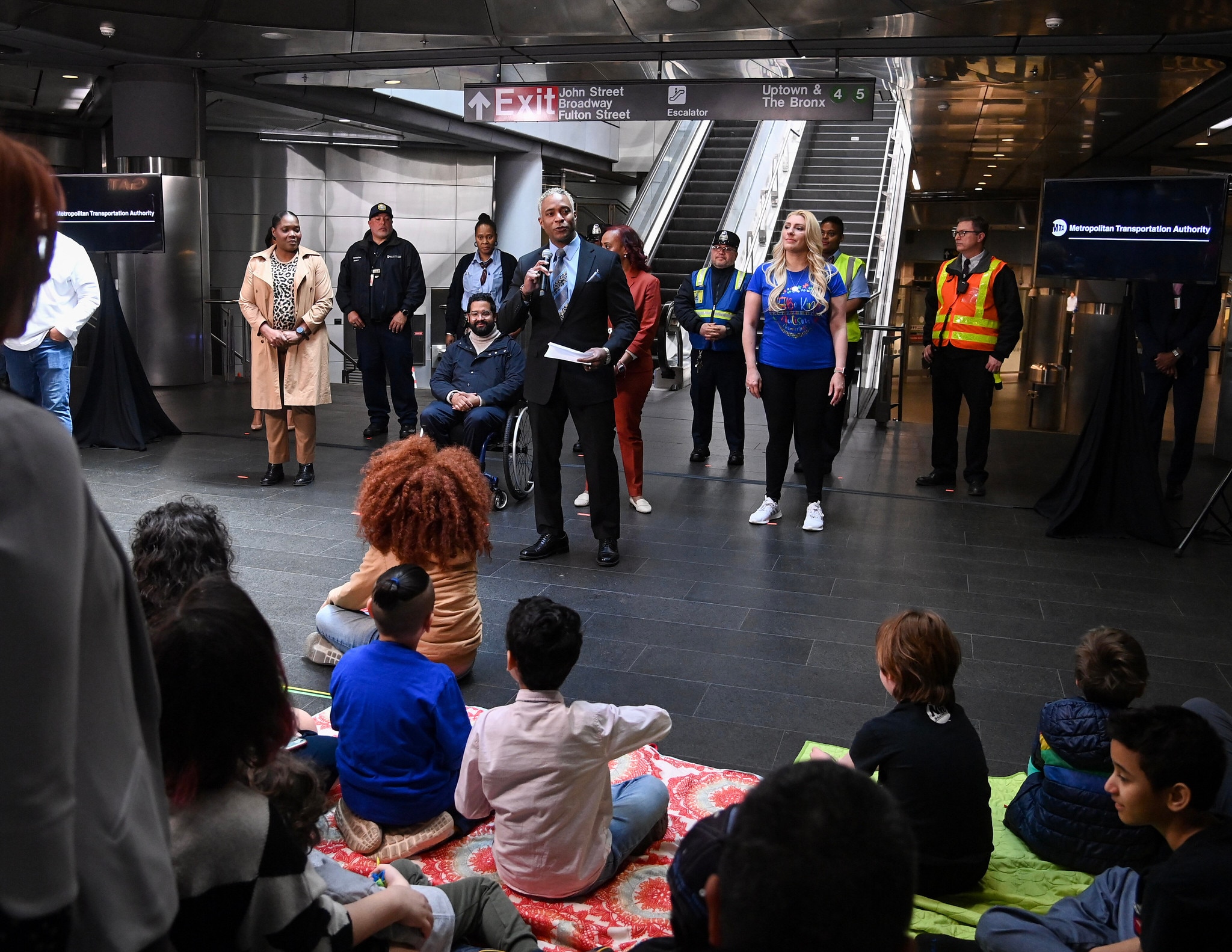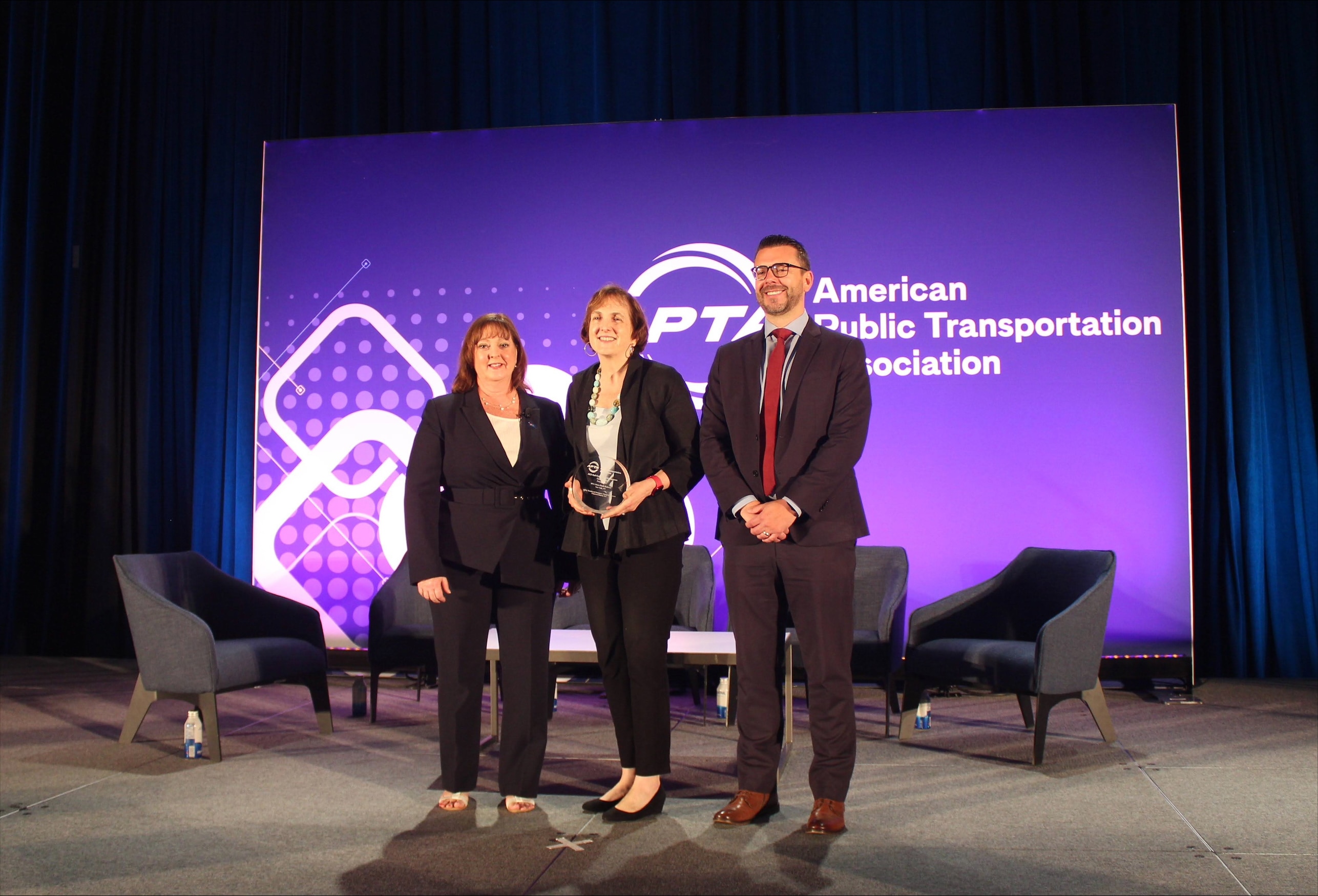Hey there, fellow transit enthusiasts! Let's dive straight into something that’s literally shaping the future of public transportation as we know it: MTA announcements voice AI. If you’ve ever been stuck on a subway platform waiting for that familiar robotic voice to tell you what’s going on, you’re about to discover how artificial intelligence is stepping in to make those announcements smoother, clearer, and way more efficient. This tech is not just changing the game for commuters but also setting new standards for urban transit systems worldwide.
In this article, we’re breaking down everything you need to know about MTA announcements voice AI. We’ll explore how it works, why it’s important, and the impact it’s having on both riders and operators. Whether you’re a daily commuter or someone who’s curious about how AI is transforming public transit, you’re in the right place. So buckle up and let’s get started!
Before we dive deep, let me remind you that this isn’t just another tech buzzword. Voice AI in MTA announcements is a game-changer that addresses real-world challenges, like improving communication during delays, enhancing accessibility for all passengers, and ensuring timely updates. Stick around because we’re going to cover it all in a way that’s easy to understand and packed with insights you won’t find anywhere else.
What Exactly is MTA Announcements Voice AI?
Alright, let’s start with the basics. MTA announcements voice AI refers to the integration of artificial intelligence into the Metropolitan Transportation Authority’s (MTA) public announcement systems. Instead of relying on pre-recorded messages or human operators, the MTA now uses advanced AI algorithms to generate announcements dynamically. This means delays, service changes, and other updates can be communicated instantly and accurately, without the need for manual intervention.
Here’s the kicker: this isn’t just about replacing human voices. Voice AI brings a level of customization and adaptability that traditional systems simply can’t match. For instance, it can adjust the tone, speed, and even language based on the audience. Imagine hearing an announcement in Spanish or Mandarin during your commute—it’s not just a possibility; it’s becoming a reality thanks to voice AI.
Why Voice AI is a Game-Changer for Public Transit
Now, you might be wondering, why all the fuss about MTA announcements voice AI? Well, here’s the deal: public transit systems face a ton of challenges when it comes to communication. Delays happen, trains get rerouted, and stations get overcrowded. All of these scenarios require clear, timely updates to keep passengers informed. But let’s face it—human operators can only do so much, especially during peak hours.
Enter voice AI. This technology eliminates the lag time between an incident happening and passengers being informed. It also reduces errors, ensuring that announcements are accurate and consistent every single time. Plus, it enhances accessibility by catering to diverse audiences, including those with hearing impairments or non-native speakers. In short, voice AI is turning public transit communication into a seamless, efficient process.
Key Benefits of Voice AI in Transit Systems
Let’s break down the top benefits of implementing voice AI in MTA announcements:
- Instant Updates: No more waiting for someone to manually record or broadcast a message. Voice AI delivers updates in real-time.
- Improved Accuracy: AI algorithms ensure that announcements are precise and error-free, reducing confusion for passengers.
- Customization: From adjusting the language to tweaking the tone, voice AI can adapt to different scenarios and audiences.
- Enhanced Accessibility: Passengers with disabilities or language barriers benefit from AI-driven announcements that cater to their needs.
How Does Voice AI Work in MTA Announcements?
Okay, so how does this magical technology actually work? At its core, MTA announcements voice AI combines natural language processing (NLP), machine learning, and speech synthesis to create dynamic announcements. Here’s a quick rundown:
First, the system receives input from various sources, such as train operators, dispatchers, or sensors. This input could be anything from a delay report to a service change notification. The AI then processes this information using NLP to understand the context and generate an appropriate announcement. Finally, speech synthesis technology converts the text into a natural-sounding voice that passengers hear over the loudspeakers.
What’s fascinating is that the AI gets smarter over time. Through machine learning, it learns from past interactions and improves its ability to handle complex scenarios. For example, if there’s a sudden surge in passenger complaints about unclear announcements, the AI can adapt by refining its tone or phrasing.
Addressing Common Concerns About Voice AI
As with any new technology, there are bound to be questions and concerns about MTA announcements voice AI. Some people worry about job displacement, while others question the reliability of AI-generated messages. Let’s tackle these concerns head-on:
Will Voice AI Replace Human Operators?
Not entirely. While voice AI automates many aspects of announcement creation, human oversight is still crucial. Operators will continue to play a vital role in monitoring the system, addressing complex situations, and ensuring that AI functions as intended. Think of voice AI as a tool that enhances human capabilities rather than replacing them.
Can We Trust AI-Generated Announcements?
Absolutely. Voice AI systems are rigorously tested and trained using vast amounts of data to ensure accuracy and reliability. Plus, they’re designed to integrate seamlessly with existing transit infrastructure, providing a safety net in case of technical issues. In fact, many experts believe that AI-driven announcements are more trustworthy than human-generated ones, simply because they eliminate the risk of human error.
Real-World Examples of Voice AI in Action
Let’s take a look at some real-world examples of how MTA announcements voice AI is making a difference. In New York City, the MTA has already begun testing AI-driven announcements in select subway stations. Early results show a significant improvement in communication efficiency, with passengers reporting clearer and more timely updates.
But it’s not just limited to NYC. Transit systems around the world, from London to Tokyo, are exploring the potential of voice AI. In Singapore, for instance, the Land Transport Authority (LTA) has implemented an AI-powered announcement system that supports multiple languages, making it easier for international travelers to navigate the city’s public transit network.
Data and Statistics Backing Voice AI Success
Here are some stats to back up the effectiveness of voice AI in transit systems:
- Studies show that AI-driven announcements reduce passenger wait times by up to 20%.
- Transit systems using voice AI report a 30% increase in customer satisfaction scores.
- Accessibility features, such as multilingual announcements, have boosted rider engagement by 15%.
Challenges and Limitations of Voice AI
Of course, no technology is perfect. While MTA announcements voice AI offers numerous benefits, it also comes with its fair share of challenges. One of the biggest hurdles is ensuring that the system remains up-to-date with the latest transit data. If the input information is outdated or incomplete, the AI-generated announcements may not be accurate.
Another challenge is addressing the digital divide. While voice AI enhances accessibility for many passengers, there’s still a segment of the population that may struggle to interact with or understand AI-driven systems. Transit authorities must work to bridge this gap by providing alternative communication methods and educating passengers about how to use the new technology.
Overcoming Technical Hurdles
Transit systems are investing heavily in overcoming these technical hurdles. For instance, the MTA is collaborating with tech companies to develop more robust AI models that can handle a wider range of scenarios. They’re also exploring ways to integrate voice AI with other smart city technologies, such as real-time traffic monitoring and predictive analytics.
The Future of MTA Announcements Voice AI
So, what’s next for MTA announcements voice AI? The possibilities are endless. As AI technology continues to evolve, we can expect even more advanced features, such as personalized announcements for individual passengers and predictive updates based on historical data. Imagine receiving a tailored message that tells you exactly when your train will arrive, how crowded it will be, and whether there are any alternative routes available.
Additionally, the integration of voice AI with other smart transit technologies, such as autonomous vehicles and contactless payment systems, will create a truly seamless commuting experience. The future of public transit is here, and voice AI is at the forefront of this transformation.
How You Can Benefit from Voice AI
As a commuter, you stand to gain a lot from MTA announcements voice AI. Whether you’re a daily subway rider or an occasional traveler, this technology ensures that you’re always in the loop about service updates and delays. Plus, the enhanced accessibility features mean that everyone, regardless of language or ability, can benefit from clear and concise announcements.
So, the next time you hear that familiar voice over the loudspeakers, take a moment to appreciate the cutting-edge technology behind it. Voice AI is not just changing the way we communicate on public transit; it’s shaping the future of urban mobility.
Key Takeaways
Let’s recap the key points we’ve covered:
- MTA announcements voice AI is revolutionizing public transit communication by providing instant, accurate updates.
- It offers numerous benefits, including improved accessibility, customization, and reliability.
- While there are challenges to overcome, transit authorities are actively working to address them through innovation and collaboration.
- The future of voice AI in transit systems looks bright, with exciting developments on the horizon.
Final Thoughts and Call to Action
There you have it, folks! MTA announcements voice AI is more than just a fancy tech upgrade—it’s a game-changer for public transit. By enhancing communication, improving accessibility, and ensuring timely updates, this technology is making commuting easier and more enjoyable for everyone.
Now, it’s your turn to weigh in. What do you think about voice AI in transit systems? Have you experienced it firsthand? Share your thoughts in the comments below, and don’t forget to share this article with your fellow commuters. Together, let’s spread the word about how AI is transforming the way we travel!
Table of Contents
- What Exactly is MTA Announcements Voice AI?
- Why Voice AI is a Game-Changer for Public Transit
- Key Benefits of Voice AI in Transit Systems
- How Does Voice AI Work in MTA Announcements?
- Addressing Common Concerns About Voice AI
- Real-World Examples of Voice AI in Action
- Data and Statistics Backing Voice AI Success
- Challenges and Limitations of Voice AI
- The Future of MTA Announcements Voice AI
- How You Can Benefit from Voice AI



Detail Author:
- Name : Dr. Arlo Durgan II
- Username : qstamm
- Email : edmond.pouros@gmail.com
- Birthdate : 1976-05-15
- Address : 9594 Maud Spurs Suite 113 South Carminebury, IN 17728
- Phone : 678-612-9757
- Company : Reichert PLC
- Job : Ship Pilot
- Bio : Omnis consequuntur sint quis qui suscipit. Commodi quia qui est sed quia. Qui quos voluptas libero nihil itaque aliquid ipsam. Et necessitatibus et error ut pariatur quidem qui.
Socials
twitter:
- url : https://twitter.com/janelleflatley
- username : janelleflatley
- bio : Qui non ducimus ea nihil rerum fugiat. Quo sunt est quaerat ut. Quis molestiae repudiandae eos debitis unde perferendis veniam.
- followers : 3107
- following : 2005
instagram:
- url : https://instagram.com/flatleyj
- username : flatleyj
- bio : Reiciendis minus odio ab placeat non. Laudantium eaque numquam in sit illum provident aut est.
- followers : 4351
- following : 362
tiktok:
- url : https://tiktok.com/@flatleyj
- username : flatleyj
- bio : Sequi cupiditate ex et sed eligendi et.
- followers : 1059
- following : 1163
facebook:
- url : https://facebook.com/jflatley
- username : jflatley
- bio : Illum est et rem delectus quidem cum officia. Odit velit eius commodi et eum.
- followers : 1837
- following : 781